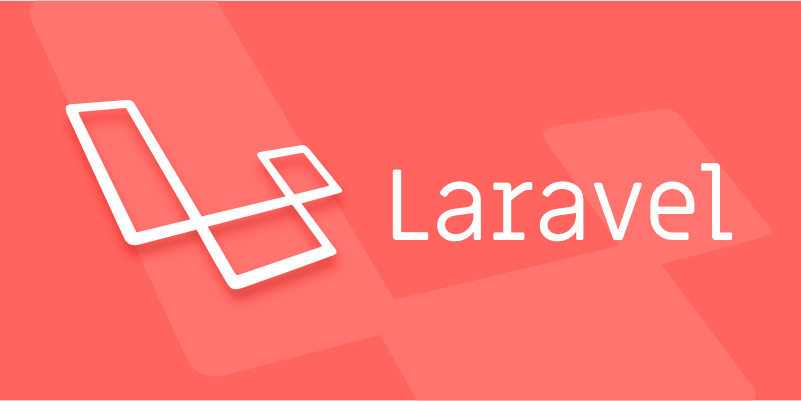How to implement the SOLID principles in a Laravel project?
Jul 30, 2025 am 04:23 AMSingle Responsibility Principle: Each class should have one responsibility, so move business logic to service classes, use form requests for validation, and handle side effects via events or jobs. 2. Open/Closed Principle: Extend functionality without modifying existing code by using interfaces and dependency injection, such as binding different payment gateways in Laravel’s service container. 3. Liskov Substitution Principle: Ensure child classes maintain the behavioral contract of their parents, avoiding parameter or behavior inconsistencies in overridden methods. 4. Interface Segregation Principle: Create small, focused interfaces like UserFinder and UserUpdater so clients only depend on methods they use, improving modularity. 5. Dependency Inversion Principle: Depend on abstractions by injecting interfaces into high-level modules, allowing flexible binding of implementations via Laravel’s IoC container. Applying these principles in Laravel enhances maintainability, scalability, and testability by promoting separation of concerns and reducing coupling, ultimately preventing controllers and models from becoming monolithic.

SOLID principles are fundamental object-oriented design concepts that help create maintainable, scalable, and testable code. Laravel, being a modern PHP framework built on Symfony components, provides excellent support for implementing these principles. Here's how you can apply each SOLID principle in a Laravel project.

1. Single Responsibility Principle (SRP)
A class should have only one reason to change.
In Laravel, it’s common to see bloated controllers or models doing too much — handling HTTP logic, business logic, database queries, and even sending emails.

How to apply SRP:
-
Move business logic out of controllers and models.
- Use service classes for business logic.
- Use form request classes for validation.
- Use events/listeners or jobs for side effects (e.g., sending emails).
Example:

// app/Services/UserRegistrationService.php
class UserRegistrationService
{
public function register(array $data): User
{
$user = User::create($data);
event(new UserRegistered($user));
return $user;
}
}Then in your controller:
public function store(UserRegistrationRequest $request, UserRegistrationService $service)
{
$user = $service->register($request->validated());
return redirect()->route('users.show', $user);
}This keeps the controller lightweight and delegates responsibility appropriately.
2. Open/Closed Principle (OCP)
Classes should be open for extension, but closed for modification.
This means you should be able to add new functionality without changing existing code.
How to apply OCP in Laravel:
- Use interfaces and dependency injection.
- Leverage Laravel’s service container to bind implementations.
Example:
// Define an interface
interface PaymentGateway
{
public function charge(float $amount): bool;
}
// Implement for Stripe
class StripePayment implements PaymentGateway { /* ... */ }
// Implement for PayPal
class PayPalPayment implements PaymentGateway { /* ... */ }Bind in a service provider:
$this->app->bind(PaymentGateway::class, StripePayment::class);
Now you can switch implementations without changing the consuming class:
class CheckoutController
{
public function __construct(protected PaymentGateway $gateway) {}
public function pay(Request $request)
{
$this->gateway->charge($request->amount);
// No code change needed if you switch to PayPal later
}
}You can extend functionality by adding new gateways, not modifying existing ones.
3. Liskov Substitution Principle (LSP)
Subtypes must be substitutable for their base types.
If you’re using inheritance (e.g., extending classes), ensure child classes don’t break the expected behavior of the parent.
How to follow LSP in Laravel:
- Avoid overriding methods in a way that changes their contract.
- Don’t weaken preconditions or strengthen postconditions in child classes.
Example:
If you have a base NotificationSender class, make sure all children (e.g., EmailSender, SmsSender) behave predictably when send() is called.
Avoid:
class SmsSender extends NotificationSender
{
public function send($message, $email) // expects email, but we're sending SMS?
{
// Invalid parameter usage — violates LSP
}
}Instead, design interfaces that are behaviorally consistent.
4. Interface Segregation Principle (ISP)
Clients shouldn’t be forced to depend on interfaces they don’t use.
Instead of large, generic interfaces, create smaller, specific ones.
How to apply ISP in Laravel:
- Don’t create one massive repository interface with every method.
- Split interfaces by use case.
Example:
interface UserFinder
{
public function findById(int $id): ?User;
public function findByEmail(string $email): ?User;
}
interface UserUpdater
{
public function update(User $user, array $data): bool;
}Now a service that only needs to find users depends only on UserFinder, not on update methods it doesn’t use.
You can still have a class implement both:
class EloquentUserRepository implements UserFinder, UserUpdater
{
// Implement both
}But consumers only depend on what they need.
5. Dependency Inversion Principle (DIP)
Depend on abstractions, not on concretions.
High-level modules (like controllers or services) should not depend directly on low-level details (like Eloquent models or specific APIs).
How to apply DIP in Laravel:
- Use interfaces and Laravel’s IoC container.
- Inject dependencies instead of instantiating them.
Example:
class UserController extends Controller
{
public function __construct(protected UserFinder $finder) {}
public function show($id)
{
$user = $this->finder->findById($id);
return view('users.show', compact('user'));
}
}Bind the implementation:
// AppServiceProvider.php
public function register()
{
$this->app->bind(UserFinder::class, EloquentUserRepository::class);
}Now the controller doesn’t care how the user is found — only that it can be found.
Bonus Tips for Laravel
-
Use Actions or Tasks: For complex operations, consider using single-action classes (e.g.,
CreateOrderAction) to keep things SRP-compliant. - Leverage Jobs and Listeners: Offload side effects (e.g., notifications, logging) to queued jobs or event listeners.
- Repositories Services: Use repositories to abstract data access, and services to orchestrate logic.
- Avoid Facades in Business Logic: Prefer dependency injection over facades for testability and clarity.
Final Thoughts
Applying SOLID in Laravel isn’t about strict rules — it’s about writing code that’s easier to test, change, and scale. Laravel’s architecture (service container, contracts, events, jobs) makes it natural to follow these principles if you structure your app thoughtfully.
Start small: clean up controllers, extract logic into services, use interfaces, and let the service container do the rest.
Basically, just don’t let Eloquent models or controllers become dumping grounds for everything.
The above is the detailed content of How to implement the SOLID principles in a Laravel project?. For more information, please follow other related articles on the PHP Chinese website!

Hot AI Tools

Undress AI Tool
Undress images for free

Undresser.AI Undress
AI-powered app for creating realistic nude photos

AI Clothes Remover
Online AI tool for removing clothes from photos.

Clothoff.io
AI clothes remover

Video Face Swap
Swap faces in any video effortlessly with our completely free AI face swap tool!

Hot Article

Hot Tools

Notepad++7.3.1
Easy-to-use and free code editor

SublimeText3 Chinese version
Chinese version, very easy to use

Zend Studio 13.0.1
Powerful PHP integrated development environment

Dreamweaver CS6
Visual web development tools

SublimeText3 Mac version
God-level code editing software (SublimeText3)

Hot Topics
 Creating Custom Validation Rules in a Laravel Project
Jul 04, 2025 am 01:03 AM
Creating Custom Validation Rules in a Laravel Project
Jul 04, 2025 am 01:03 AM
There are three ways to add custom validation rules in Laravel: using closures, Rule classes, and form requests. 1. Use closures to be suitable for lightweight verification, such as preventing the user name "admin"; 2. Create Rule classes (such as ValidUsernameRule) to make complex logic clearer and maintainable; 3. Integrate multiple rules in form requests and centrally manage verification logic. At the same time, you can set prompts through custom messages methods or incoming error message arrays to improve flexibility and maintainability.
 Adding multilingual support to a Laravel application
Jul 03, 2025 am 01:17 AM
Adding multilingual support to a Laravel application
Jul 03, 2025 am 01:17 AM
The core methods for Laravel applications to implement multilingual support include: setting language files, dynamic language switching, translation URL routing, and managing translation keys in Blade templates. First, organize the strings of each language in the corresponding folders (such as en, es, fr) in the /resources/lang directory, and define the translation content by returning the associative array; 2. Translate the key value through the \_\_() helper function call, and use App::setLocale() to combine session or routing parameters to realize language switching; 3. For translation URLs, paths can be defined for different languages ??through prefixed routing groups, or route alias in language files dynamically mapped; 4. Keep the translation keys concise and
 Working with pivot tables in Laravel Many-to-Many relationships
Jul 07, 2025 am 01:06 AM
Working with pivot tables in Laravel Many-to-Many relationships
Jul 07, 2025 am 01:06 AM
ToworkeffectivelywithpivottablesinLaravel,firstaccesspivotdatausingwithPivot()orwithTimestamps(),thenupdateentrieswithupdateExistingPivot(),managerelationshipsviadetach()andsync(),andusecustompivotmodelswhenneeded.1.UsewithPivot()toincludespecificcol
 Sending different types of notifications with Laravel
Jul 06, 2025 am 12:52 AM
Sending different types of notifications with Laravel
Jul 06, 2025 am 12:52 AM
Laravelprovidesacleanandflexiblewaytosendnotificationsviamultiplechannelslikeemail,SMS,in-appalerts,andpushnotifications.Youdefinenotificationchannelsinthevia()methodofanotificationclass,andimplementspecificmethodsliketoMail(),toDatabase(),ortoVonage
 Understanding and creating custom Service Providers in Laravel
Jul 03, 2025 am 01:35 AM
Understanding and creating custom Service Providers in Laravel
Jul 03, 2025 am 01:35 AM
ServiceProvider is the core mechanism used in the Laravel framework for registering services and initializing logic. You can create a custom ServiceProvider through the Artisan command; 1. The register method is used to bind services, register singletons, set aliases, etc., and other services that have not yet been loaded cannot be called; 2. The boot method runs after all services are registered and is used to register event listeners, view synthesizers, middleware and other logic that depends on other services; common uses include binding interfaces and implementations, registering Facades, loading configurations, registering command-line instructions and view components; it is recommended to centralize relevant bindings to a ServiceProvider to manage, and pay attention to registration
 Understanding Dependency Injection in Laravel?
Jul 05, 2025 am 02:01 AM
Understanding Dependency Injection in Laravel?
Jul 05, 2025 am 02:01 AM
Dependency injection automatically handles class dependencies through service containers in Laravel without manual new objects. Its core is constructor injection and method injection, such as automatically passing in the Request instance in the controller. Laravel parses dependencies through type prompts and recursively creates the required objects. The binding interface and implementation can be used by the service provider to use the bind method, or singleton to bind a singleton. When using it, you need to ensure type prompts, avoid constructor complications, use context bindings with caution, and understand automatic parsing rules. Mastering these can improve code flexibility and maintenance.
 Strategies for optimizing Laravel application performance
Jul 09, 2025 am 03:00 AM
Strategies for optimizing Laravel application performance
Jul 09, 2025 am 03:00 AM
Laravel performance optimization can improve application efficiency through four core directions. 1. Use the cache mechanism to reduce duplicate queries, store infrequently changing data through Cache::remember() and other methods to reduce database access frequency; 2. Optimize database from the model to query statements, avoid N 1 queries, specifying field queries, adding indexes, paging processing and reading and writing separation, and reduce bottlenecks; 3. Use time-consuming operations such as email sending and file exporting to queue asynchronous processing, use Supervisor to manage workers and set up retry mechanisms; 4. Use middleware and service providers reasonably to avoid complex logic and unnecessary initialization code, and delay loading of services to improve startup efficiency.
 Handling exceptions and logging errors in a Laravel application
Jul 02, 2025 pm 03:24 PM
Handling exceptions and logging errors in a Laravel application
Jul 02, 2025 pm 03:24 PM
The core methods for handling exceptions and recording errors in Laravel applications include: 1. Use the App\Exceptions\Handler class to centrally manage unhandled exceptions, and record or notify exception information through the report() method, such as sending Slack notifications; 2. Use Monolog to configure the log system, set the log level and output method in config/logging.php, and enable error and above level logs in production environment. At the same time, detailed exception information can be manually recorded in report() in combination with the context; 3. Customize the render() method to return a unified JSON format error response, improving the collaboration efficiency of the front and back end of the API. These steps are






